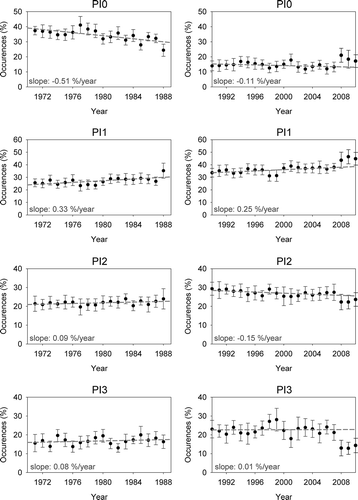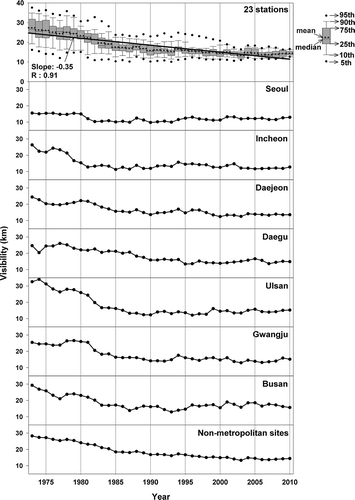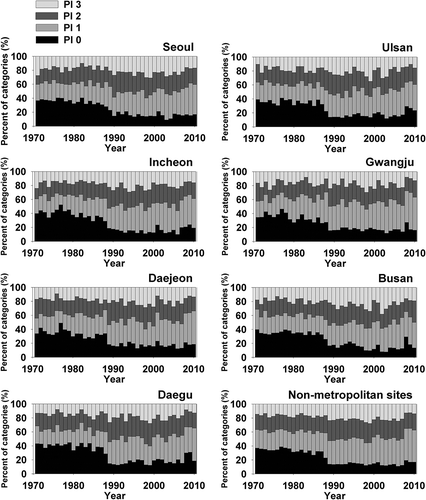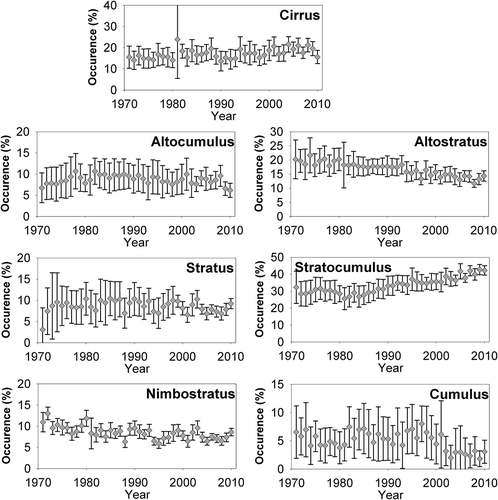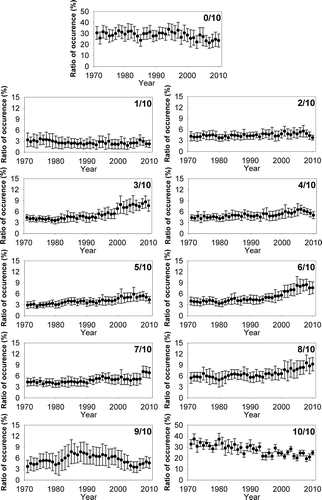Figures & data
Figure 1. Locations of 23 meteorological stations. Black dots (●) are seven metropolitan cities: 1, Seoul, the capital of Korea; 2, Incheon; 3, Daejeon; 4, Daegu; 5, Ulsan; 6, Gwangju; and 7, Busan. Stars (⛆) represent other nonurban sites.
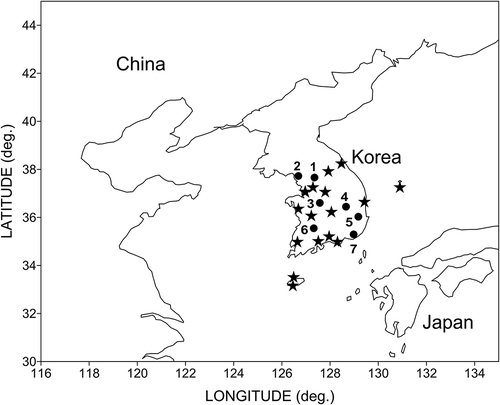
Table 1. Classification of precipitation intensity (PI) in this study
Figure 3. Spatial distributions of visibility. Kriging method was used as an objective analysis to produce spatial distributions from measurements obtained at 23 sites illustrated in .
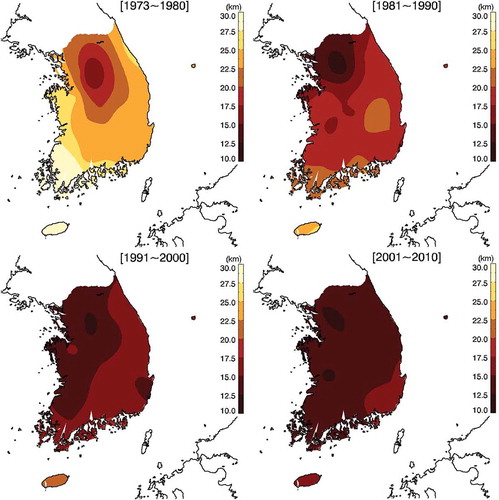
Figure 4. Time variations of sunshine duration with the regression lines over the analysis period. Short-term regression lines (thick blue line) starting in 1990 are shown for individual seven major cities.
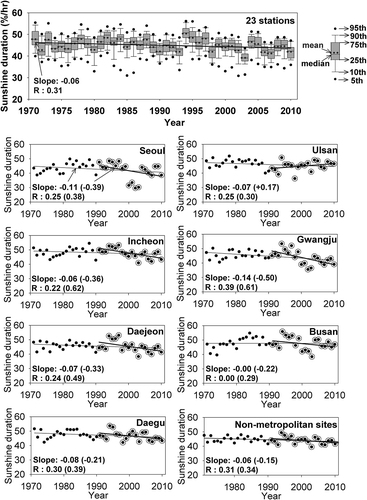
Figure 5. Spatial distributions of sunshine duration. Kriging objective analysis was used to produce spatial distributions from measurements obtained at 23 sites illustrated in .
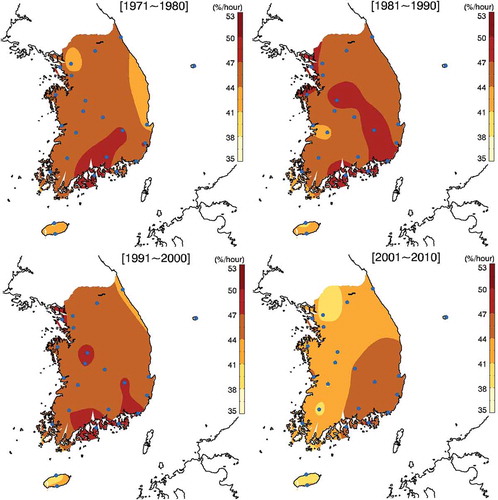
Figure 7. Time variations of occurrences of precipitation intensities (PI) averaged for 23 sites for the period of (left panel) and after 1990 (right panel). Black dots (●) indicate mean, and error bars plus and minus one standard deviation.
